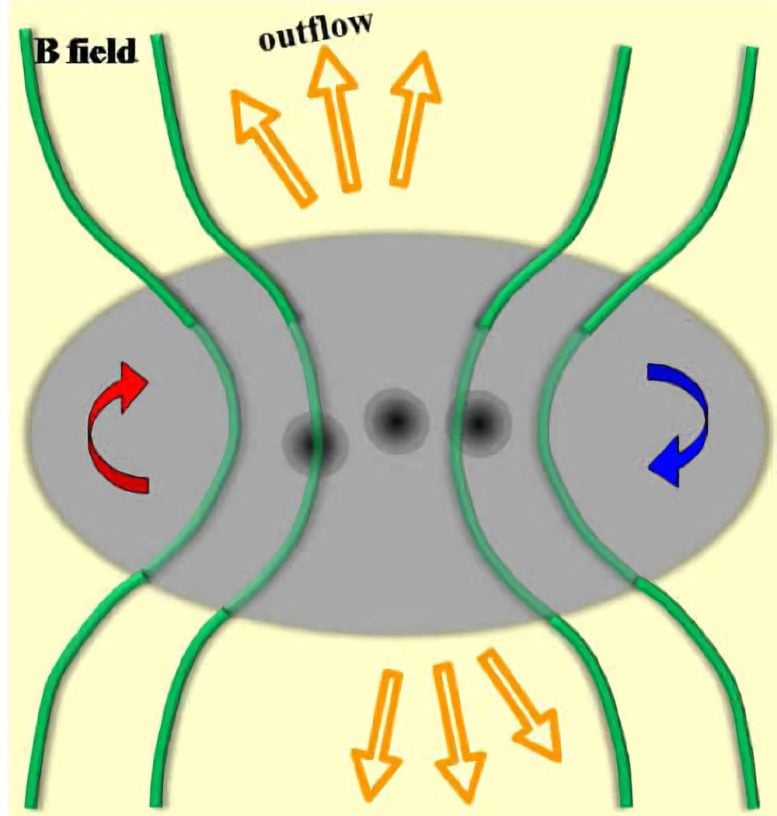
Using the Submillimeter Array to study the magnetic field in a massive star cluster, astronomers were able to determine the properties of the magnetic field and the role it plays in star formation.
Massive stars tend to form in clusters as the gas and dust in molecular clouds collapses and fragments under the influence of gravity. In the classic picture of star formation, gravity must eventually compete against the thermal pressure that develops in the collapsing core as the material heats up.
Astronomers think they understand those steps, but there is a debate about the possible role of two other physical processes: turbulent motions and magnetic fields. One school argues that the turbulence that develops as the cloud shrinks leads to fragmentation and the formation of multiple young stars in a young cluster. The other camp argues that there are magnetic fields present in the original clouds, and calculates that as the cloud shrinks the fields become stronger, take on an hourglass shape, and produce a flattened cloud and stars with bipolar flows ejected along the direction of the field.
Harvard-Smithsonian Center for Astrophysics (CfA) astronomer Qizhou Zhang and five colleagues used the Submillimeter Array (SMA) to study the magnetic field in one massive young cluster known to have a flattened shape and a bipolar outflow. The region has a luminosity of about thirty thousand Suns, and is located about seventeen thousand light-years away. The team determined the properties of the magnetic field by using the SMA’s ability to measure the polarization of the millimeter light from the region: Magnetic fields cause elongated dust grains in the cloud to line themselves up along the field, and arrange in this coherent pattern they scatter light preferentially in one polarization.
The scientists report detecting the clear signature of an hourglass-shaped magnetic field that is remarkably consistent with the theoretical predictions of the classic paradigm. This is the first time that such an hourglass field, aligned with a well-defined outflow system, has been seen in a high-mass region. The new observations provide strong evidence that massive star and cluster formation proceeds in a way that astronomers think resembles the processes in the formation of Sun-like stars. Not least, the team notes that the magnetic field dominates over the turbulence.
Reference: “Submillimeter Array Observations of Magnetic Fields in G240.31+0.07: An Hourglass in a Massive Cluster Forming Core” by Keping Qiu, Qizhou Zhang, Karl M. Menten, Hauyu B. Liu, Ya-Wen Tang and Josep M. Girart, 30 September 2014, The Astrophysical Journal Letters.
DOI: 10.1088/2041-8205/794/1/L18
Never miss a breakthrough: Join the SciTechDaily newsletter.